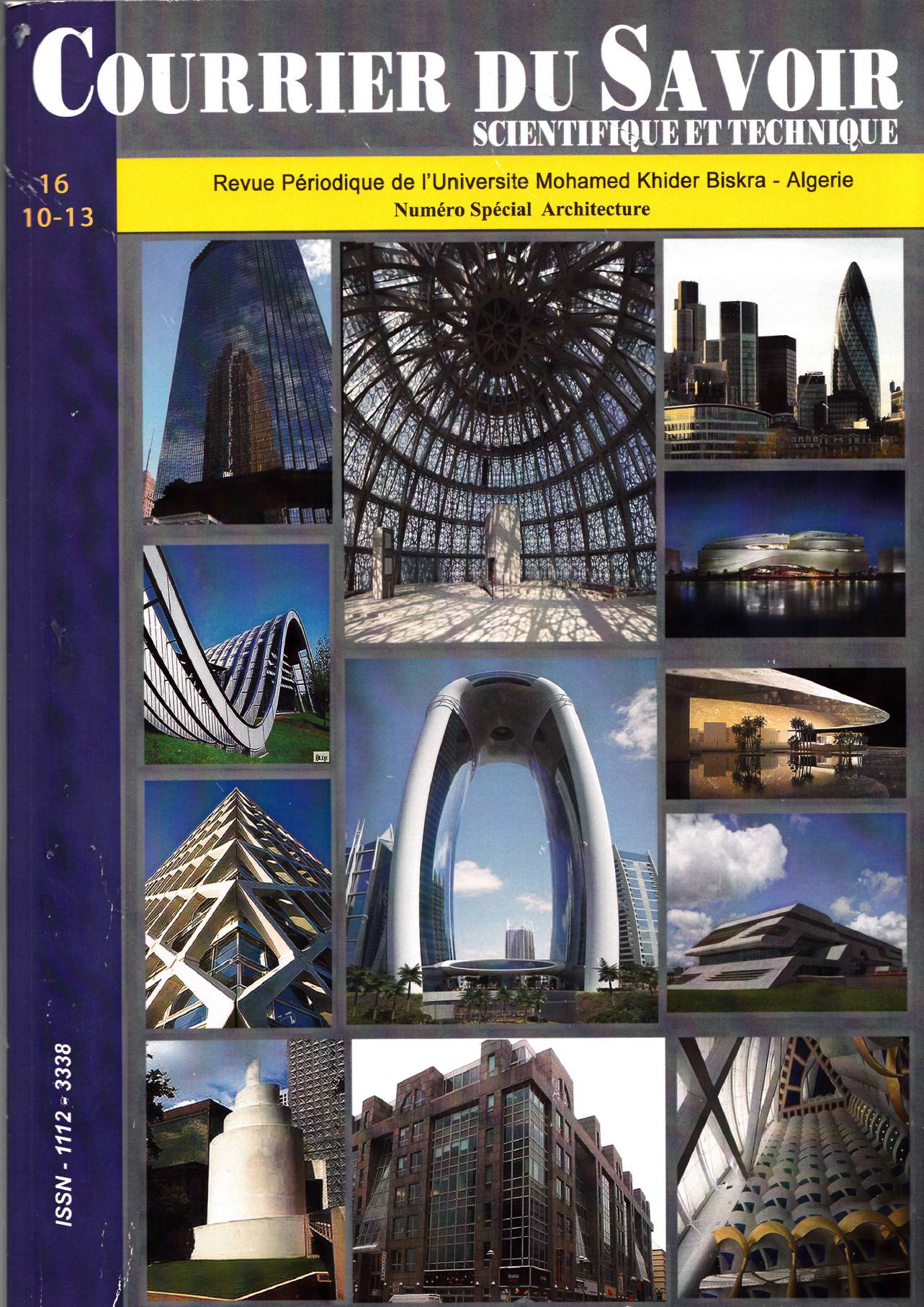APPROCHE D’UNE ANALYSE SYNTAXIQUE DE L’HABITAT RURAL CAS D’EL KANTARA
Résumé
L’habitat de production privée des régions rurales reste globalement méconnu à travers son histoire surtout du point de vue de
sa forme architecturale. A l'inverse de l'habitat médinal, l'habitat rural traditionnel est désigné par des vocables comme
indécent, rudimentaire ou primitif.
El Kantara, cas d'étude, en est un exemple illustratif. À l’époque précoloniale et coloniale, le village était prédominé par le type
d’architecture vernaculaire traditionnelle. Après l’indépendance ce type d’architecture a subit plusieurs changements. Tantôt
par tentative de restauration et ajout d’autres espaces selon le besoin tantôt par changement radical.
Ce qui est tenté dans cette étude, c’est de comprendre le propre de l’architecture traditionnelle rurale, en l’approchant de façon
synthétique sur la longue durée d’avant 1830 jusqu’à aujourd’hui et ainsi explorer les types spatiaux et leur évolution.
L’article présentera une analyse quantitative de plusieurs plans de maisons simples appartenant à des ères différentes. En
utilisant les techniques de la syntaxe spatiale, il a été découvert des similarités génotypiques dans les maisons qui montrent en
apparence des différences dans l’organisation spatiale.
Les modèles de l’intégration et la ségrégation spatiales suggèrent trois types syntactiques selon la profondeur.
The rural housing environment remains globally underestimated seen on its architectural shape. Contrary to medinal
settlement, the traditional rural housing is indicated as indecent, rudimentary or primitive.
El Kantara, case of study, is an illustrative example. In the pre-colonial and colonial period, the village was prevailed by the
traditional vernacular architecture type. After the independence, this type has undergone several changes: sometimes by
attempt of restoration and addition of other spaces according to the users need and sometimes by radical transformation.
What is tried in this study is to understand the rural architecture properties by approaching them in a synthetic way on the long
period before 1830 until today and so to investigate the spatial types and their evolution.
This paper will present a quantitative analysis of several houses’ plans of different periods. It was founded genotypical
similarities in the houses which show seemingly differences in the spatial arrangement. The models of the spatial integration
and segregation suggest three syntactic types according to the depth.
Références
36
[3] Côte M., (1993), L’Algérie ou l’espace retourné, Ed :
Media-Plus Algérie.
[4] Driessen J, Fiasse H, Devolder M, Haciguzeller P &
Letesson Q., Recherches spatiales au Quartier Nu à
Malia (MR III) in Creta Antica 9, 2008, pp.93- 110.
[5] Geertz C., 1983, Local knowledge, further essays in
interpretive anthropology, basic books, USA.
[6] Hanson J., 1998, decoding homes and houses,
Cambridge university press, UK.
[7] Hillier, B., 1996, Space is the Machine, Cambridge
University Press, England.
[8] Hillier B & Hanson J, 1984, The social logic of space,
Cambridge university press, UK.
[9] Hillier, B., Hanson, J., Graham, H., 1987, “Ideas are in
Things: An Application of the Space Syntax Method to
Discovering House Genotypes”, Environment and
Planning B: Planning and Design, 14, pp 363-385,
London.
[10] Manum, Bendik, Rusten, Espen and Benze, Paul
(2005) “AGRAPH, Software for Drawing and
Calculating Space Syntax Graphs”, 5th International
Space Syntax Symposium, Proceedings, Volume I, (p.
97). Delft
[11] Zaco, R., The power of the veil: gender inequality in
the domestic setting of traditional courtyard houses,
(pp65, 75). In courtyard housing. Ed: Taylor &
Francis. [1] Bellal T., 2007, Spatial interface between inhabitants
and visitors in m’zab houses, 6th
international space
syntax symposium, Istambul.
[2] Cil E., 2007, Space, practice, memory: the
transformations of the houses in kula, a town in
Anatolia, 6th
international space syntax symposium,
Istambul.
35


